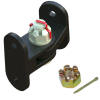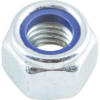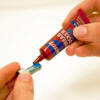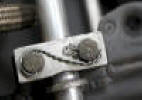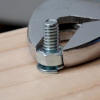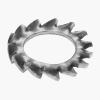| Nuts and Washers |
|
Video |
|
Nuts and washers are
commonly used in construction projects to join wood, fasten heavy wood
structures, or connect two iron parts. A nut pulls two pieces of work
together along a bolt shaft, while a washer is a thin, unthreaded piece
that fits onto the bolt shaft to spread the load of the connection over
a greater area. Washers can also help prevent the fastener from
loosening once installed, reduce wear on the hole, and stop inward
pressure on softer materials |
|
|
| Lock Nuts |
| A locknut, also known as
a locking nut, self-locking nut, prevailing torque nut, stiff nut, or
elastic stop nut, is a fastener that prevents a nut or bolt from
loosening under vibrations and torque. Some types of locknuts include: |
- Nylon insert: A
locknut with a nylon collar insert at the end that resists turning
- Galvanized: A
locknut coated with a sacrificial zinc coating to prevent corrosion
- Flange: A one-piece,
all-metal locknut that doesn't have the same temperature and
chemical limitations as non-metallic lock nuts
- Binx: A self-locking
nut with a thread locking system that resists the screw from backing
off
- Aerotight: A
self-locking nut with anti-vibration properties that can be reused
several times
- Serrated flange: A
locking nut with a wide flange at one end that functions as an
integrated washer
- Locking wire
|
| Washers |
| Washers are thin,
circular pieces of metal or plastic with a hole in the center that are
used to distribute the load of a threaded fastener, such as a bolt or
nut. Washers can also be square and have other uses, such as a spacer,
spring, wear pad, preload indicating device, locking device, and to
reduce vibration. |



